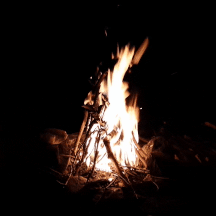<p >The Russian Armed Forces are estimated to have received over 12 million rounds of 152mm artillery shells from North Korea, according to a new report from the South Korean Defence Ministry’s Defence Intelligence Agency. “If calculated with 152mm single shells, the number of supplied shells is presumed to have reached more than 12 million,” the agency’s report stated. The Russian Army was by the end of 2024 already estimated to have&nbsp;received up to 9 million 122mm and 152mm artillery rounds from its neighbour, as well as growing numbers of guns and rounds from an entirely new calibre previously not fielded by the service, namely 170mm, which have <a href="https://militarywatchmagazine.com/article/nkorean-superheavy-artillery-long-range-high-precision-ukrainian" >provided</a> a much longer range. No estimates have been provided for supplies of 122mm and 170mm shells.&nbsp;The Russian Army’s reliance on North Korean supplies has continued to grow, with many Russian artillery units having come to rely almost entirely on ammunition supplied by North Korea, while at least six Russian artillery units currently source between 50 and 100 percent of their munitions from the country.</p><p ><img src="https://militarywatchmagazine.com/m/articles/2025/07/13/article_6873bbdbf11c02_41850154.jpeg" title="North Korean Leadership Inspect 170mm Howitzer Units During Exercises"></p><p >The Defence Intelligence Agency’s report closely coincides with the visit of Russian Foreign Minister Sergei Lavrov to Pyongyang, during which he <a href="https://militarywatchmagazine.com/article/russia-foreign-minister-thanked-heroic-korean-people-army-kursk" >praised</a> “the heroic soldiers of the the Korean People’s Army” in their fighter for “the liberation of Kursk Region with the cost of their blood and even their lives,” referring to Pyongyang’s personnel contributions to repelling a Ukrainian assault on the Russian region. It also closely follows a <a href="https://militarywatchmagazine.com/article/russia-four-assault-units-advance-sumy-nkorean-reinforcements" >report</a> by the South Korean National Intelligence Service in June that further Korean People’s Army units are set to be deployed to support the ongoing Russian war effort. This fuelled speculation that after the securing of Kursk, North Korean units could begin to be committed to offensives further west in areas such as Donetsk and Sumy.</p><p ><img src="https://militarywatchmagazine.com/m/articles/2025/07/13/article_6873bdb5e4fcd5_57783079.jpeg" title="North Korean Bulsae-4 Anti-Tank Missile System – An Asset Used on the Frontlines to Support Russian Forces"></p><p >Russia’s increasingly extreme reliance on North Korean support has reflected the significant discrepancy between the two countries’ investments in their ground forces since the end of the Cold War, with North Korea having sustained investment in key conventional assets such as armour and artillery, while Russia largely neglected these in an era where it pursued normalisation of relations with the Western world and integration into Europe. This was recently observed by leading expert on North Korean security A. B. Abrams, who noted in his <a href="https://www.amazon.co.uk/Surviving-Unipolar-Era-Koreas-Standoff-ebook/dp/B0DLBSYTQK/ref=sr_1_1?crid=1XVWR0HIYEZPL&amp;dib=eyJ2IjoiMSJ9.f-Ax-i_TTA5Vm9i7nw_s2Q.sNgTMxIay6Hv7r4RU9n1CdhAvWZinLe00fdxBJUrgSc&amp;dib_tag=se&amp;keywords=surviving+the+unipolar+era&amp;qid=1747110149&amp;s=books&amp;sprefix=surviving+the+unipolar+e%2Cstripbooks%2C289&amp;sr=1-1" target="_blank">recent book</a>&nbsp;Surviving the Unipolar Era: North Korea's 35 Year Standoff with the United States:</p><p >“Where in the final year of the Cold War, 1989, the Soviet Army had fielded 1184% as much towed artillery as North Korea, 350% as much self-propelled artillery and 284% as much rocket artillery, by contrast in 2021 North Korea at a conservative estimate fielded 412% as much towed and self-propelled artillery and 625% as much rocket artillery as the Russian Army. This reflected the extent to which Russian forces had contracted, and that to which the KPA [Korean People’s Army] had sustained vast conventional ground capabilities past the Cold War era. The extreme contraction of Russia’s frontline forces and stockpiles, its defence sector and its general military readiness resulted in a very different balance of power between the two states, which yielded dividends for Pyongyang as its neighbour came to depend on it heavily.”&nbsp;</p><p >Russian defence procurements from North Korea have become increasingly diverse, including <a href="https://militarywatchmagazine.com/article/nkorean-bulsae4-antitank-takes-out-ukraine-artillery-kursk" target="_blank">anti-tank guided missiles</a> with fire and forget capabilities not seen on their Russian counterparts, and <a href="https://militarywatchmagazine.com/article/move-aside-iskander-kn23b-russia-top" target="_blank">tactical ballistic missiles</a> with ranges and payloads exceeding those produced in Russia. Much remains uncertain regarding the future of these procurements, with speculation having grown that a wider range of armaments types, including main battle tanks, will be acquired.&nbsp;</p>
